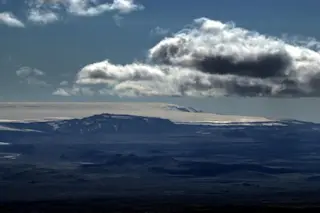The view of Barðarbunga in Iceland from the slopes of Askja.
Dave McGarvie, used with permission It has been over 3 years since the last eruption in Iceland. However, there are signs that an eruption might be in the works near remote Barðarbunga. The Icelandic Meteorological Office (IMO) is reporting two major earthquake swarms that started up on the morning on August 16 and continue to roll into August 17. Right it seems that there are two separate earthquake swarms producing small earthquakes and has now eclipsed the May 2014 swarm in terms of number of earthquakes. There are no indications that an eruption has started at Barðarbunga, but some roads have been closed as a precaution because any eruption would likely produce a jökulhlaup (glacial outburst flood) as both swarms are occurring underneath Vatnajökull. This ice cap is also the home of the last Icelandic volcano to erupt, Grímvötn. ...














